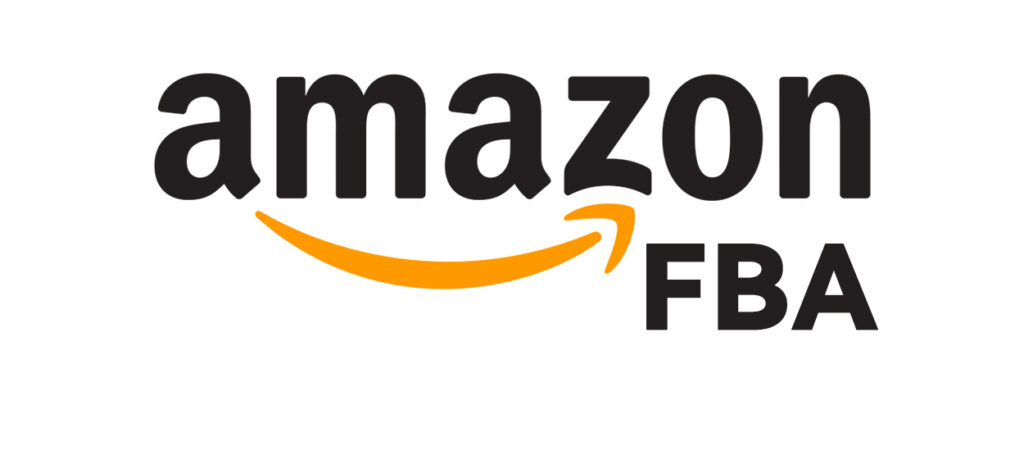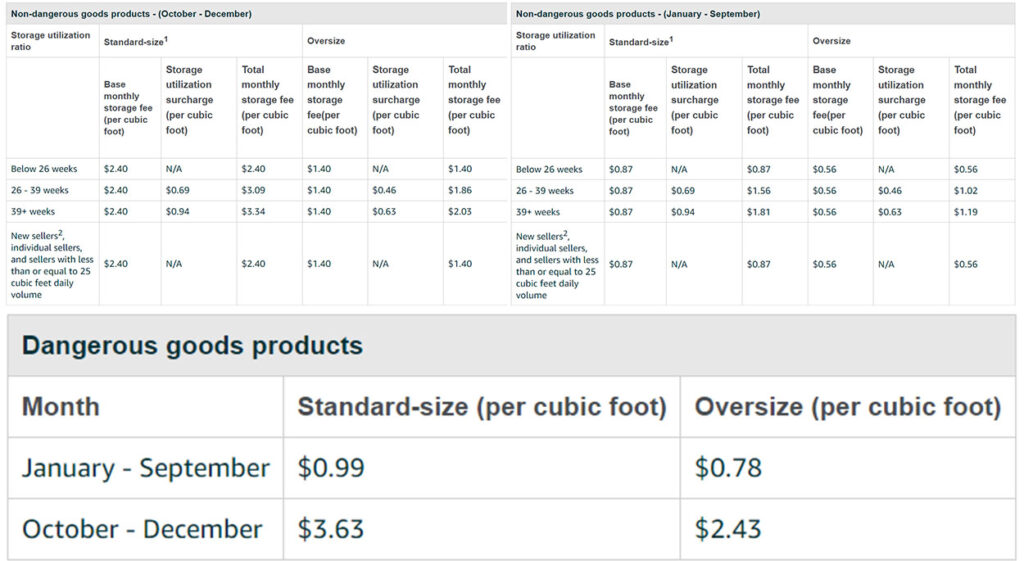Estimated reading time: 14 minutes
When you first start exploring Amazon, you might not be familiar with what Fulfillment By Amazon (FBA) is. Often called FBA, which is the abbreviation of Fulfillment By Amazon.
Fulfillment by Amazon (FBA) is a service provided by Amazon where sellers send their products to Amazon’s fulfillment centers, and Amazon handles storage, packaging, shipping, as well as customer service, and returns.
We’ll know all aspects of FBA and provide suggestions for boosting your business.
Table of Contents
ToggleWhat Is Fulfillment By Amazon (FBA)?
FBA Meaning: What is Amazon FBA?

Amazon FBA, short for “Fulfillment by Amazon,” is a service provided by Amazon that allows sellers to store their products in Amazon’s fulfillment centers. When a customer orders a product from an FBA seller, Amazon takes care of the storage, packing, shipping, customer service, and returns for these orders.
This service enables sellers to leverage Amazon’s vast distribution network and customer service expertise, potentially reaching a wider customer base and offering faster shipping times.
FBA can be particularly beneficial for sellers who want to focus on other aspects of their business without managing the logistics of order fulfillment.
Why Choose Fulfillment By Amazon (FBA) for Your E-Commerce Business?
Choosing Fulfillment by Amazon (FBA) for your e-commerce business offers several advantages:
- Increased Reach and Visibility: With millions of active customers on Amazon, utilizing FBA gives your products greater exposure to a massive audience. Additionally, being eligible for Prime shipping can significantly increase your chances of winning the Buy Box and attracting more customers.
- Reduced Operational Burden: Outsourcing fulfillment to Amazon means you no longer have to worry about warehousing space, packing materials, shipping carriers, or managing returns. This frees up valuable time and resources that you can invest in other aspects of growing your business.
- Exceptional Customer Service: With FBA, customer inquiries and issues are handled by Amazon’s dedicated customer service team. This ensures a high level of customer satisfaction and reduces the burden on your support staff.
- Scalability and Flexibility: FBA allows you to scale your business effortlessly. Whether you’re selling a handful of products or managing a vast catalog, Amazon’s extensive infrastructure can handle the volume, ensuring smooth operations even during peak seasons.
- Global Reach: FBA enables easy access to international markets, as Amazon handles the complexities of cross-border shipping and customer service.
Something about: Amazon Prime

1. What is Amazon Prime?
Amazon Prime is a paid subscription service offered by Amazon. It provides users with a variety of benefits, such as free two-day shipping on eligible items, access to streaming services like Prime Video and Prime Music, exclusive shopping deals, and a selection of free eBooks. Prime members can also enjoy early access to special deals and promotions.
2. What Are the Benefits of Accessing Amazon Prime with FBA?
Enhanced Customer Trust: Prime products are generally perceived as more trustworthy and reliable due to Amazon’s customer service and quick shipping.
Potential for Increased Sales: With the Prime badge, products are more likely to be chosen by the vast number of Prime subscribers, potentially leading to increased sales.
Streamlined Operations: FBA takes care of the shipping, customer service, and returns, which can be especially beneficial during Prime-exclusive events like Prime Day, where there’s an influx of orders.
How to Start Using Fulfillment By Amazon (FBA) Services?
To start using Fulfillment by Amazon (FBA) services for your e-commerce business, follow these steps:
Step 1: Create an Amazon Seller Account

If you don’t already have one, sign up for an Amazon Seller account. Choose between an Individual or Professional account based on your business needs.
Step 2: Create Your Product Listings
Add your products to the Amazon catalog. Each product you plan to fulfill through FBA needs a product listing in your Amazon seller account.
Step 3: Prepare Your Products for Shipment
Follow Amazon’s guidelines for labeling, packaging, and preparing your products for shipment to their fulfillment centers.
Step 4: Ship Your Inventory to Amazon
Once your products are ready, create a shipment plan in your seller account and arrange for transportation to deliver your inventory to Amazon’s designated fulfillment centers. Amazon will provide you with the necessary shipping and routing information.
Step 5: Monitor and Manage Your Inventory
Keep track of your inventory levels through the FBA dashboard and replenish stock as needed to avoid running out of popular items.
Step 6: Monitor and Manage Your Account
Keep track of your sales, inventory, and customer feedback to refine your strategy and operations.
Note: When choosing FBA services, many details cannot be overlooked. Especially before shipping your products to Amazon, it is essential to check the quality of your products, label your tags, and choose the best packaging materials and methods.
Owlsourcing offers comprehensive services for your Amazon FBA business. If you are looking to import products from China, we can provide a one-stop Amazon FBA service from sourcing to shipping.
FBA Fees and Costs
The fulfillment cost per unit includes picking and packing your orders, shipping and handling, customer service, and product returns. Costs are based on the weights and dimensions of your product. Shipping weight is calculated based on the item’s unit weight or dimensional weight.
From: sell.amazon
What Are the Fulfillment Fees and Other Charges Associated with FBA?
When using FBA, you will incur fulfillment fees that cover picking, packing, shipping, customer service handling, and other related costs. These fees vary depending on the size and weight of your products, as well as the category they fall under. It’s crucial to familiarize yourself with Amazon’s fee structure to calculate your profitability accurately.
Additionally, there may be additional charges for optional services such as labeling, removals, and long-term storage. While these services can provide convenience or help optimize your inventory, it’s important to assess their cost-effectiveness based on your specific business needs.
The following image shows the Amazon FBA monthly inventory storage fees:

The following provides you with Amazon’s current FBA fees:
How Do FBA Storage Fees Impact Fulfillment Costs?

Storage fees are another aspect to consider when using FBA.
Amazon charges monthly storage fees based on the volume of space your inventory occupies in their fulfillment centers. To minimize these costs, it’s essential to effectively manage your inventory levels and avoid excess stock that may incur higher storage fees over time.
We’ll cover this in the next part of the article: How to minimize storage fee costs?
Comparing the Costs of FBA with Other Fulfillment Methods
| Cost Factor | Fulfillment by Amazon (FBA) | Direct Fulfillment | Dropshipping |
| Inventory Storage Fees | Monthly fees are based on space used and time in storage. | Costs associated with owning or leasing a warehouse. | Typically, none, as inventory is held by suppliers. |
| Shipping Costs | Discounted shipping rates through Amazon’s network. | Depends on carrier rates, volume, and shipping distance. | Often lower, as suppliers might have preferential rates. |
| Return Handling Fees | Fees for processing returns. | Costs include labor, processing, and restocking. | Varies depend on the supplier’s policy. |
| Initial Setup Costs | Minimal, mainly shipping inventory to Amazon. | Significant – warehouse setup, purchasing inventory, etc. | Minimal, primarily for setting up an online store or platform. |
| Scaling Costs | Scalable with Amazon’s infrastructure. | Requires investment in more space, inventory, and staff. | Scalable, limited by supplier’s capacity and terms. |
| Customization and Branding | Limited options for customization and branding of packaging. | Full control over packaging and branding. | Limited, dependent on the supplier’s willingness to customize. |
| Lead Time | Fast, as Amazon prioritizes FBA shipments. | Dependent on in-house processing speed and logistics. | Dependent on the supplier’s processing and shipping times. |
While each business has unique requirements, FBA’s competitive pricing and comprehensive service offerings make it an attractive option for many e-commerce entrepreneurs.
FBA Inventory Management

Effective FBA Inventory Management Strategies for Success
When it comes to FBA inventory management, adopting effective strategies is essential for success. Here are some key considerations:
- Demand Forecasting: Use sales data and market trends to accurately forecast demand. This helps in maintaining optimal inventory levels, reducing storage costs, and avoiding stockouts.
- Optimized Stock Placement: With FBA, you can distribute your inventory across various Amazon fulfillment centers strategically. This allows for faster delivery times and reduces shipping costs.
- Inventory Replenishment: Regularly monitor your stock levels and set up automated replenishment systems to avoid running out of popular items or holding excessive inventory.
- Seasonal Planning: Plan for seasonal fluctuations in demand by adjusting your inventory levels accordingly. Take advantage of Amazon’s storage options during peak seasons. Adjust inventory levels accordingly to avoid overstocking or understocking.
- Stay Updated on FBA Policies: Keep abreast of changes in Amazon’s FBA policies, particularly those related to inventory, to avoid penalties and maximize efficiency.
Tip: How to know about Amazon FBA’s inventory-related policy changes?

To stay informed about changes in Amazon FBA inventory-related policies, you should regularly visit the official Amazon Seller Central website. This platform consolidates all policy updates related to Amazon FBA.
How to Avoid Stockouts and Overstocking?
Stockouts can result in missed sales opportunities while overstocking ties up capital and incurs unnecessary storage fees. Here are some tips to help you strike the right balance:
- Monitor Sales Velocity: Keep a close eye on the rate at which your products sell to identify patterns and adjust your inventory levels accordingly. This will help you avoid stockouts without overstocking.
- Accurate Demand Forecasting: Use historical sales data, market trends, and seasonality to predict future demand accurately.
- Set Reorder Points: Establish reorder points for each product based on lead times, sales velocity, and desired safety stock. This ensures that you restock before inventory levels deplete completely.
- Implement Just-in-Time (JIT) Inventory: JIT inventory management reduces the need for excessive stock by allowing you to receive products from suppliers as orders come in. This minimizes holding costs.
How to Deal with FBA Customer Service and Returns?

How to Handle Customer Inquiries and Issues with FBA Customer Service?
With FBA, Amazon takes care of customer inquiries and issues on your behalf. Here’s how it works:
- Customer Support Team: Amazon has a dedicated customer support team available 24/7 to handle customer inquiries related to order status, returns, refunds, and general product information.
- Seller Central Dashboard: As an FBA seller, you can easily manage customer inquiries through the Seller Central dashboard. Respond promptly and professionally to maintain high customer satisfaction ratings.
- Proactive Communication: Keep customers informed about their orders by providing tracking information and proactive updates regarding any delays or issues that may arise during the fulfillment process.

Policies and Procedures Regarding Returns in FBA
Returns are a natural part of any e-commerce business. With FBA, the return process is streamlined, ensuring a hassle-free experience for both sellers and customers:
- Prepaid Return Labels: Amazon provides prepaid return labels for customers returning FBA products, simplifying the returns process.
- Return Processing: Once returned items are received at Amazon’s fulfillment centers, they undergo inspection to determine their condition. Depending on the condition, items will either be returned to your inventory or disposed of.
- Refunds and Reimbursements: Amazon handles customer refunds directly, and as a seller, you will be reimbursed for eligible returns in your FBA account.
By leveraging FBA’s customer service capabilities and efficient returns process, you can build trust with your customers and enhance their overall shopping experience.
Overcoming Challenges and Achieving Success

Addressing Common Challenges in FBA: Solutions and Best Practices
Here are some solutions and best practices to overcome risks:
- Competition: With the popularity of FBA, competition can be fierce. To stand out, focus on product differentiation, marketing strategies, and providing exceptional customer service.
- Pricing: Set competitive prices while factoring in Amazon’s fees. Monitor market trends regularly to ensure your pricing remains attractive to customers.
- Inventory Performance Index (IPI): Maintain a high IPI by optimizing inventory levels, reducing excess stock, and ensuring fast-moving products are always available.
Dealing with Seasonal Sales Fluctuations with FBA
Seasonal sales fluctuations can significantly impact your business. Ensure smooth operations during peak seasons by following these tips:
- Sales Forecasting: Analyze historical data to accurately forecast demand during specific seasons. Adjust your inventory levels accordingly to avoid stockouts or overstocking.
- Promotions and Marketing: Plan promotions in advance to capitalize on seasonal buying trends. Leverage Amazon’s advertising tools to maximize visibility for your products.
- Optimize Fulfillment: During peak seasons, consider utilizing additional storage options offered by Amazon to accommodate higher inventory volumes.
Strategies to Minimize Long-Term Storage Fees in FBA

If not managed well, long-term storage fees can become a burden on you. Here are some strategies to minimize these expenses:
- Inventory Turnover: Optimize your inventory turnover rate by monitoring sales velocity, identifying slow-moving products, and implementing promotions or discounts to encourage sales.
- Removal Order Planning: Regularly review your inventory and consider removing items that have been stagnant to avoid long-term storage fees.
- Sell-through Strategies: Implement strategies such as bundling or offering discounted prices on slower-selling products to increase sell-through rates.
You can maximize profitability while successfully navigating the FBA environment.
Insights and Tips About FBA
Owlsourcing provides you with Fulfillment By Amazon (FBA) sourcing and logistics services.
Upon receiving an inquiry from the sellers, our team will share a comprehensive product quotation with you. We aim to reduce your unit costs by 20%-50% and ensure that you procure the best products at the lowest prices. Before shipping, we conduct quality checks and provide labeling services, and if necessary, offer warehousing services in China.
Importing products from China is a wise choice, but you should be aware of the mistakes imported from China. This knowledge can help you avoid many potential issues.
If you have any questions about FBA, please feel free to contact us.
Frequently Asked Questions (FAQs)
Products that are small, lightweight, non-perishable, and have a steady sales volume are typically suitable for Fulfillment by Amazon (FBA).
FBA handles customer returns by receiving the returned items at their fulfillment centers, where they assess the condition and either return them to inventory, dispose of them, or return them to the seller, depending on the seller’s preferences and the item’s condition.
Yes, FBA has restrictions on certain product listings and categories, including hazardous materials, perishable goods, and items that require special handling or storage. For specific policies, please refer to the official Amazon website.
Yes, Fulfillment by Amazon (FBA) is suitable for small businesses and startups, as it offers scalable storage, shipping services, and customer service management, reducing the logistical burden on smaller operations.
The cost to start with Amazon FBA varies widely and depends on factors like the type and quantity of products, storage needs, fulfillment fees, and any additional costs such as packaging, labeling, and shipping to Amazon’s warehouses. Initial investments can range from a few hundred to several thousand dollars. It’s essential to consider the cost of your inventory, Amazon’s fees, and any marketing or promotional expenses.
Yes, you can use your packaging for FBA shipments, but it must meet Amazon’s specific packaging requirements. These requirements are designed to ensure that items are properly protected during storage and transit.
Amazon provides detailed guidelines on the types of packaging materials that are acceptable, as well as how items should be prepared and packaged before they are sent to an FBA fulfillment center.
However, keep in mind that the packaging will typically not be visible to the end customer, as Amazon often repackages items in its boxes for delivery.



2 thoughts on “Fulfillment By Amazon (FBA): Boost Your Business Online”
Can you recommend a reliable and cost-effective fulfillment center for an Amazon FBA business based in the Canada? I am looking for a company that offers fast and accurate order processing, inventory management, and shipping services.
Thank you for your trust, Sara.
You can send an email to [email protected], and we will provide you with a satisfactory response.😊